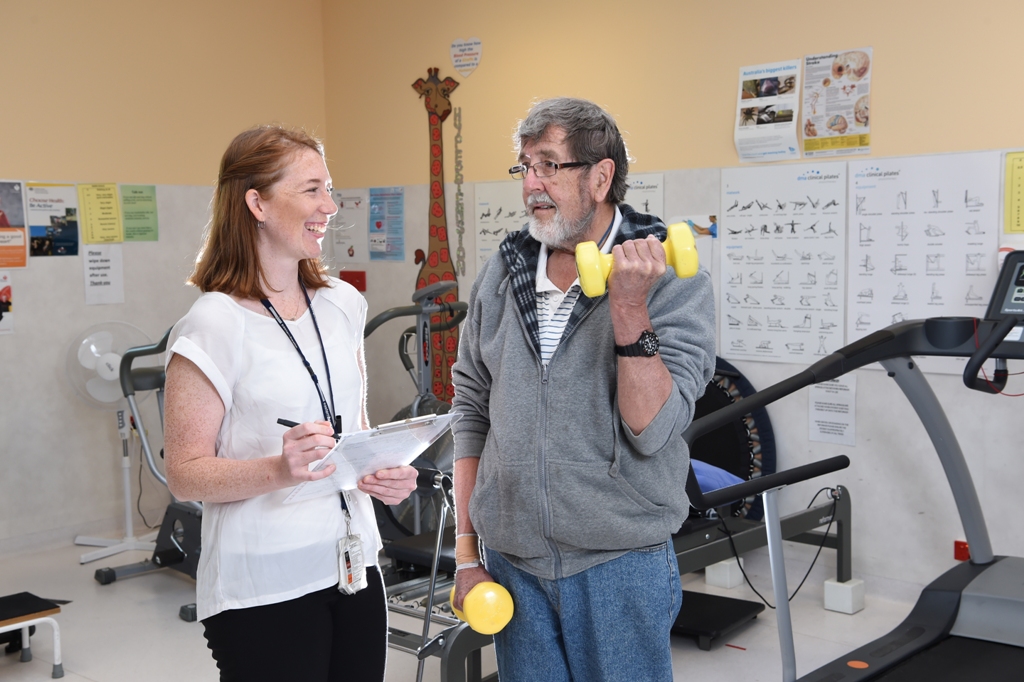Objective, health-related fitness assessments may be useful for measuring baseline status and monitoring progress. However, to remove barriers to participating in physical activity, no assessment is required to start a low intensity aerobic program (e.g. walk or cycling), resistance training with gradual progression or flexibility training in for most cancer survivors.
Monitoring physiological status such as blood pressure, SpO2 and heart rate are encouraged in a formal rehabilitation program.
Your objective assessment should include assessments of muscle strength and aerobic capacity. Older cancer survivors or those who have been treated with neurotoxic chemotherapy my also benefit from a falls and balance assessment.
Further assessment procedures to set your exercise prescription can be found in Cancer Council’s Cancer Wellness and Exercise Toolkit
RECOMMENDED PHYSICAL MEASURES:
| Item | Instrument | Validity | Reliability | Utility |
|---|---|---|---|---|
| Functional Mobility | 6 Minute Walk Test | Moderate | Excellent | 1 item 10 mins |
| Timed Up and Go Test | Moderate | Moderate - Excellent | 1 item 3 mins |
|
| 10 Metre Walk Test | Moderate - Excellent | Excellent | 1 item 5 mins |
|
| Physical Performance Battery for Patients and Cancer (PPB) | Moderate - Excellent | Excellent | 9 items 40 mins |
|
| Strength and Muscular Endurance | Hand grip strength/Hand held dynamometer | Excellent | Moderate - Excellent | Test dependent |
| 5 x Sit to Stand | Moderate - Excellent | Excellent | 1 item 5 mins |
|
| Repetition Max | Insufficient Data | Moderate - Excellent | Test dependent | |
| Balance | Timed Up and Go Test | Excellent | Excellent | 1 item 3 mins |
| Balance Evaluation Systems Test | Excellent | Moderate | 36 items 20-30 mins |
|
| Chemotherapy Induced Peripheral Neuropathy | Functional Assessment of Cancer Therapy, Gynecologic Oncology Group - (FACT/GOG-Ntx) | Moderate - Excellent | Nil formal data | 11 items 10-12 mins |
Source: Adapted from APTA Edge Taskforce

